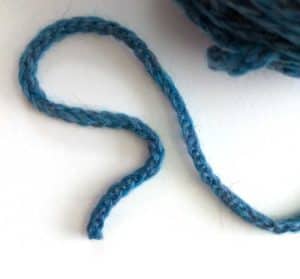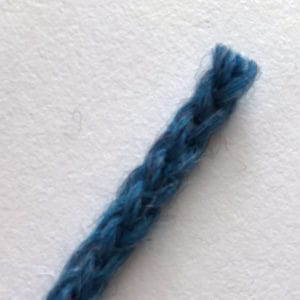Wow, a yarn that’s lightweight, has great stitch definition and added elasticity. Yes!
Chainette yarns have a lot going for them.
What exactly is a Chainette Yarn?
Instead of the typical single or plied yarn, a chainette yarn is made up of a tube of chains – basically an i-cord.
This construction does a few things:
- adds girth to the yarn without the typical weight because of its hollow core.
- creates some additional stretch because, as you probably know, an i-cord is a bit stretchy.
- works well with shorter-staple yarns like merino because of the construction. The chains work to lock in the fibers.
- reduces pilling because of the chains and how they’re locked in.
USING A CHAINETTE YARN
I was fortunate because I was “forced” to use a chainette yarn for the first time when I knit the sample of the Piura Shawl. I have to admit, I felt like I was learning about the best-kept secret in yarn when I was using it. I really enjoyed the whole experience and the shawl felt like it flew off my needles. Don’t you love when that happens.
While I used over 150 yards it only weighed about 75 grams – and it’s mostly alpaca (known as a warm but heavier fiber).
It also bloomed beautifully when I blocked it and the eyelets really opened up. The FO was just as nice as the experience of knitting it!
I’ve read that the chain construction with its bit of stretch can make cottons and other plant-based fibers easier to work with. While I haven’t tried that yet, I’ve certainly browsed for it and I think it’s only a matter of time before I try a plant-based chainette yarn. While I don’t have the problem of knitting with a cotton yarn, the heaviness of the FO makes me shy away from them. I can see working up a shawl in a cotton chainette yarn. Or maybe crocheting one since crochet is known to use more yarn (and make a heavier FO).
I’ve found myself dreaming about how a whole sweater would feel in a chainette yarn. A pullover that’s lightweight and a bit stretchy – oh yes! That sounds like a wonderful FO, doesn’t it?
Take a look at chainette yarns. You don’t know what you’re missing.




Leave a Reply